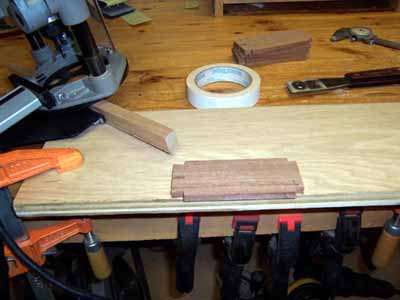I worry, right now, only about the botom edges...
I leave any top corner problems for after glue-up.
Why is this step important?
Well... do the math...
I am fitting 3mm (0.118" thick) plywood
into 1/8" (0.125") grooves...
soooo... any error bigger than 7/1000" in a corner
and the bottoms will not fit.
Do what it takes to get the bottom corners in the
same plane before proceeding with the grooves.
This dry-fit stage is also a good time to
squiggle a pencil line along the approximate point
where the bottom grooves will go.
If you look closely, you can see the pencil lines on that
photo above.
I do this because I have grown sick and tired of cutting the
grooves along the wrong edge...
trust me... when the drawers are all sitting in a pile,
the top edge and bottom edge look quite similar.
The pencil line is just another mental reminder of
what to do.
Now, on to making the making the grooves for
the bottoms...
First, I ask you to consider
dumping from memory all those articles we have all read that
encourage you to wack them out on the table saw or router table...
thereby,
leaving the infamous 'gap' at the back that somehow
gets magically filled with plugs or such.
That may be fine for some work... but fine little drawers
deserve a better treatment.
Use your plunge router and an edge guide to
route stopped grooves on the tail boards
(side pieces)... the groove stops just before penetrating
the rear tail.
|

|
|



